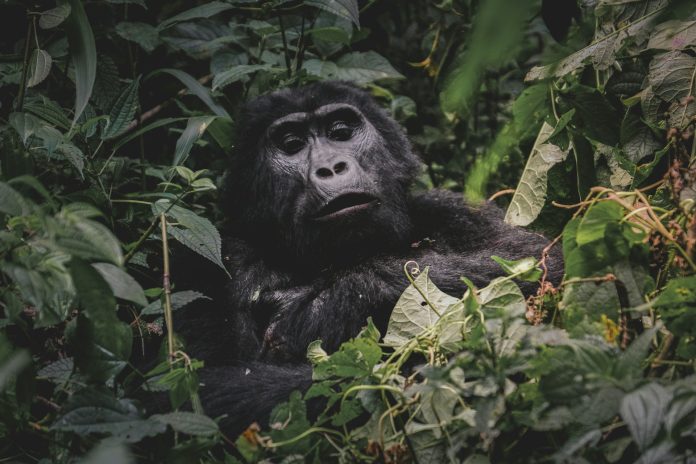The majestic mountain gorillas, residing in the lush forests of Central East Africa that span Rwanda, Uganda, and Congo, have faced numerous challenges over the years, pushing them toward the brink of extinction.
Conservationists, deeply concerned about the declining population of these magnificent creatures, have been working tirelessly to reverse the trend and ensure a sustainable future for gorillas. This essay explores the multifaceted efforts of conservationists aiming to increase the population of gorillas in Africa, emphasizing the importance of a comprehensive approach.
Understanding the Decline
Gorillas, both mountain and lowland species, have experienced a significant decline in their populations due to various threats. Habitat loss, poaching, disease, and political instability in some regions have contributed to their vulnerability. In the face of these challenges, conservationists have recognized the urgent need for concerted efforts to address each aspect of the problem.
Protecting Habitat
One of the primary focuses of gorilla conservationists is the preservation and restoration of the gorilla habitats of Bwindi Impenetrable forest and the Virunga Massif. Deforestation, driven by logging, agriculture, and infrastructure development, has encroached upon the once expansive territories of gorilla populations. Conservationists are actively involved in initiatives to protect and restore these habitats, creating safe zones for gorillas to thrive.
Implementing Anti-Poaching Measures
Poaching remains a significant threat to gorilla populations, driven by the demand for bushmeat, traditional medicine, and the illegal pet trade. Conservationists have implemented rigorous anti-poaching measures, collaborating with local communities to raise awareness about the importance of protecting gorillas and reporting illegal activities. Training and equipping park rangers with advanced technology have proven effective in deterring poachers and safeguarding gorilla territories.
Community Engagement and Education
Conservationists understand the pivotal role local communities play in the success of gorilla conservation efforts. Engaging with these communities, building partnerships, and fostering a sense of shared responsibility are integral components of the strategy. Education programs aimed at raising awareness about the ecological importance of gorillas, as well as the economic benefits of sustainable conservation, have been implemented to garner support from residents.
Health Monitoring and Disease Prevention
Gorillas are susceptible to various diseases, including those transmitted by humans. Conservationists are actively involved in health monitoring programs to detect and prevent the spread of diseases within gorilla populations. A classic example was during the COVID-19 outbreak where these naturalists fought tooth and nail to keep the gorillas from being wiped out by the deadly bug.
Regular veterinary checks, as well as research into potential treatments and vaccinations, contribute to the overall well-being of gorillas and help maintain healthy populations.
Transboundary Collaboration
Gorilla populations often span multiple countries, necessitating international collaboration for effective conservation. Transboundary initiatives involve cooperation between governments, NGOs, and local communities to establish protected corridors, ensuring the free movement of gorilla populations across borders. Such collaboration helps create larger and more viable habitats, enhancing the chances of population growth.
Restoring Protected Areas
Conservationists have explored the possibility of expanding the protected areas and restoring forests in areas where the mountain gorillas used to roam. Recently, the Volcanoes National Park Rwanda was increased by over 27 hectares of land. Restoring protected areas is crucial in providing a safe environment for the great apes. The success of these programs depends on careful planning, monitoring, and ongoing support to ensure the well-being and adaptation of the reintroduced individuals.
Conservation Tourism
Sustainable tourism can be a powerful tool for gorilla conservation, generating revenue for local communities while promoting the protection of natural habitats. Controlled and responsibly managed eco-tourism provides an economic incentive for preserving gorilla habitats, creating a harmonious balance between human development and wildlife conservation.
Monitoring and Research
Conservationists continuously invest in monitoring and research to better understand gorilla behavior, ecology, and genetics. Advanced technologies such as camera traps, drones, and genetic analysis tools enable scientists to gather valuable data, informing conservation strategies and adapting them to the evolving needs of gorilla populations.
The concerted efforts of conservationists to increase the population of gorillas in Africa reflect a holistic and multifaceted approach. From habitat protection and anti-poaching measures to community engagement and research, every aspect of conservation plays a crucial role in ensuring the survival and thriving of these magnificent creatures. By addressing the root causes of decline and fostering sustainable coexistence between humans and gorillas, conservationists are paving the way for a future where gorilla populations can flourish in their natural habitats.



 Bitcoin
Bitcoin  Ethereum
Ethereum  Tether
Tether  XRP
XRP  USDC
USDC  Solana
Solana  TRON
TRON  Lido Staked Ether
Lido Staked Ether  Cardano
Cardano  Avalanche
Avalanche  Toncoin
Toncoin